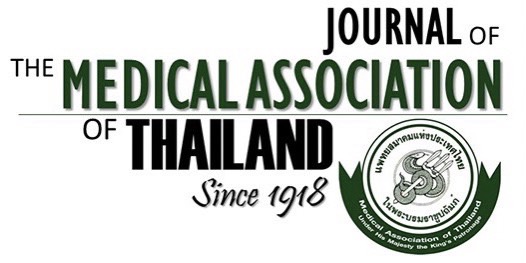Antibiotic Prescribing Rates and Patterns at the Pediatric Outpatient Clinic of King Chulalongkorn Memorial Hospital
Bhubejh Tojumroen¹, Jarujan Subchartanan², Aislinn Cook³,⁴, Jan Goelen³, Suvaporn Anugulruengkitt²,⁵
Affiliation : ¹ King Chulalongkorn Memorial Hospital, the Thai Red Cross Society, Bangkok, Thailand; ² Department of Pediatrics, Faculty of Medicine, Chulalongkorn University, Bangkok, Thailand; ³ Antibiotic Policy Group, City St. George’s University of London, London, United Kingdom; ⁴ Nuffield Department of Primary Care Health Sciences, University of Oxford, Oxford, United Kingdom; ⁵ Center of Excellence for Pediatric Infectious Diseases and Vaccines, Chulalongkorn University, Bangkok, Thailand
Background: The World Health Organization (WHO) developed the AWaRe, which is the Access, Watch, and Reserve framework to optimize antibiotic use and promote stewardship, with a target of having at least 60% of the prescribed antibiotics come from the Access category. However, data on pediatric outpatient antibiotic prescribing in Thailand remain limited.
Objective: To evaluate the frequency, patterns, and appropriateness of antibiotic prescriptions among pediatric outpatients with suspected infections, focusing on respiratory symptoms.
Materials and Methods: A point-prevalence study was conducted over two years, in 2022 and 2023, in the pediatric outpatient department of King Chulalongkorn Memorial Hospital (KCMH), that included all children under 18 years of age who presented with acute infection symptoms on the survey day. Data on demographics, symptoms, and antibiotic prescriptions were collected and classified by a single investigator using the WHO AWaRe classification. The rationality of prescriptions was evaluated based on WHO guidelines.
Results: Among 354 pediatric patients, 39 (11.0%) received antibiotics. Most prescriptions (77.5%) were from the Access group, primarily amoxicillin at 47.5% and amoxicillin-clavulanic acid at 20.0%, both of which were recommended first-line treatments for respiratory infections. Antibiotics from the Watch group accounted for 22.5%, while no Reserve group antibiotics were prescribed. All cases of sinusitis received antibiotic treatment, and the overall antibiotic prescribing rate for respiratory illnesses was 10.8%. Additionally, 87.5% of all prescriptions complied with WHO guidelines.
Conclusion: The present study highlights a low rate of antibiotic prescriptions among pediatric outpatients, accompanied by high adherence to WHO guidelines and a predominant use of Access group antibiotics. These findings underscore the importance of maintaining rational prescribing practices.
Received 17 April 2025 | Revised 5 October 2025 | Accepted 6 October 2025
DOI: 10.35755/jmedassocthai.2025.11.898-905-02979
Keywords : Antibiotics; Prevalence; AWaRe; Outpatient; Primary care; Point prevalence survey; PPS
All Articles
Download



